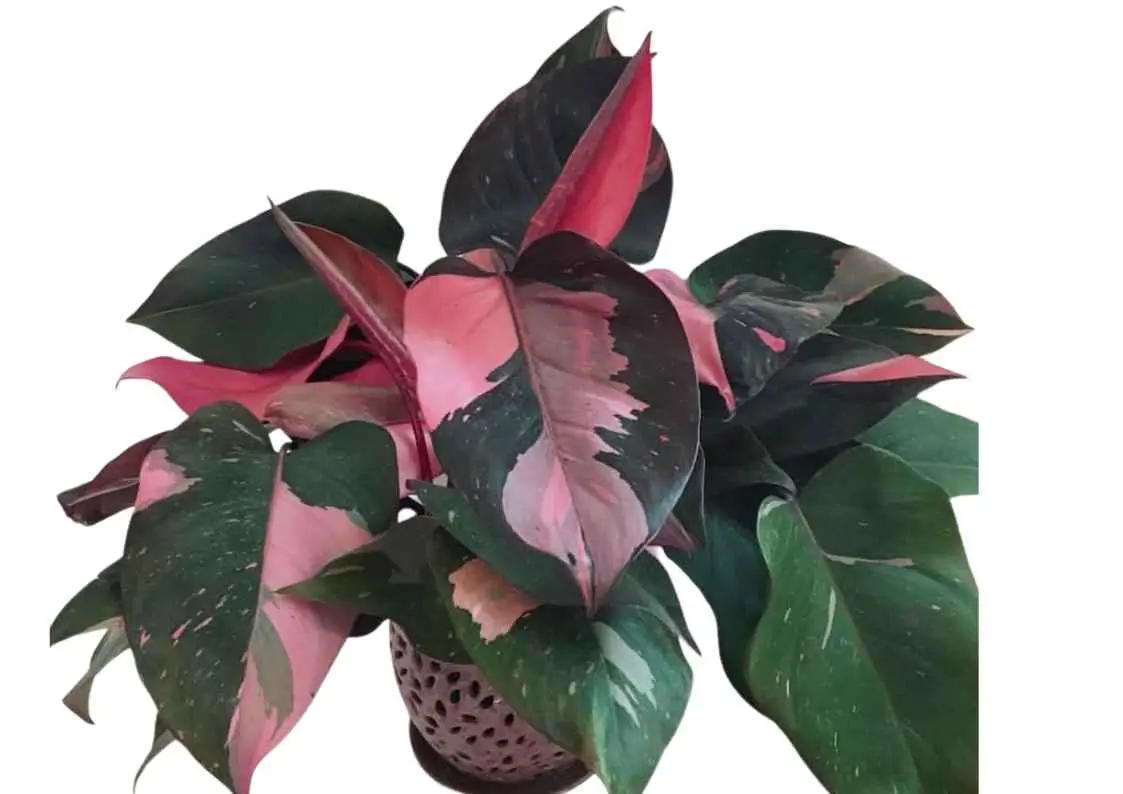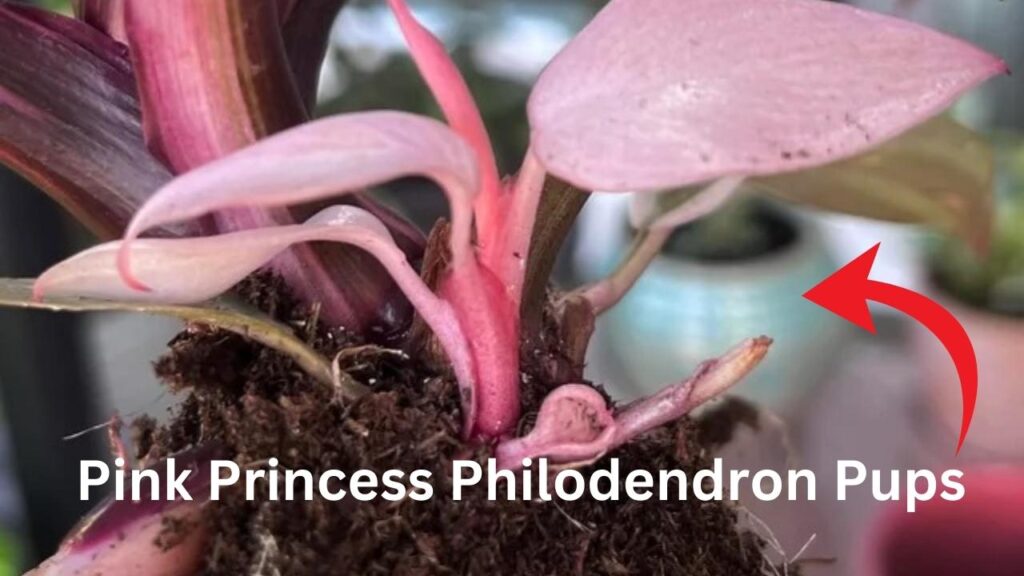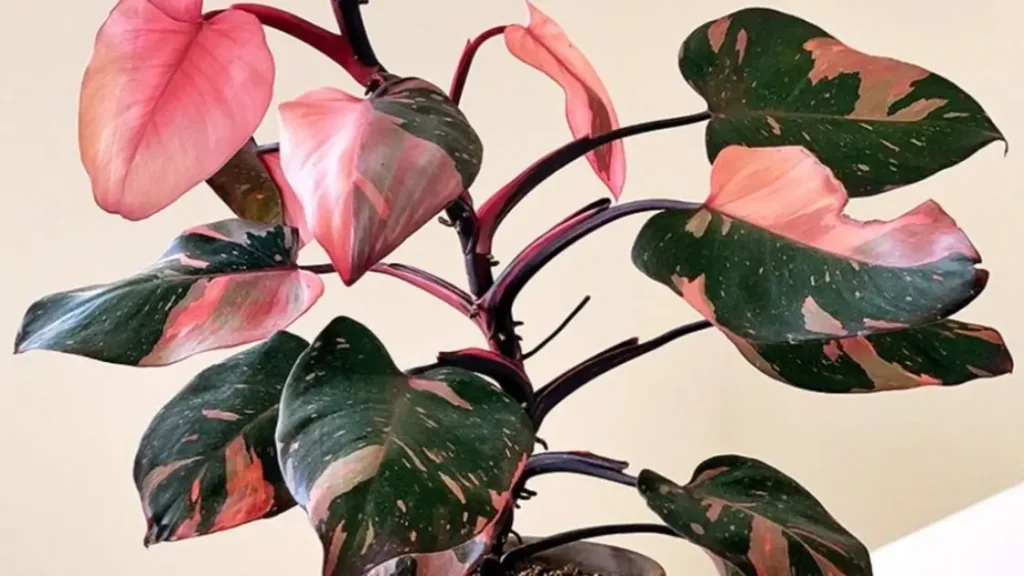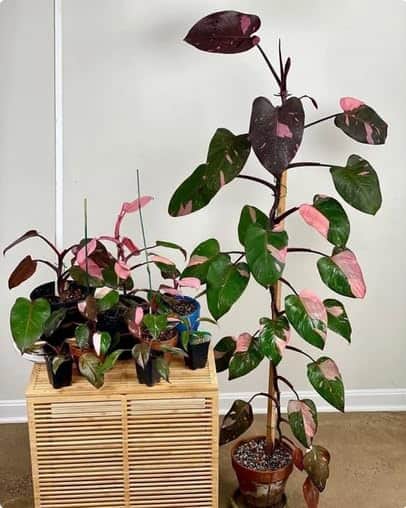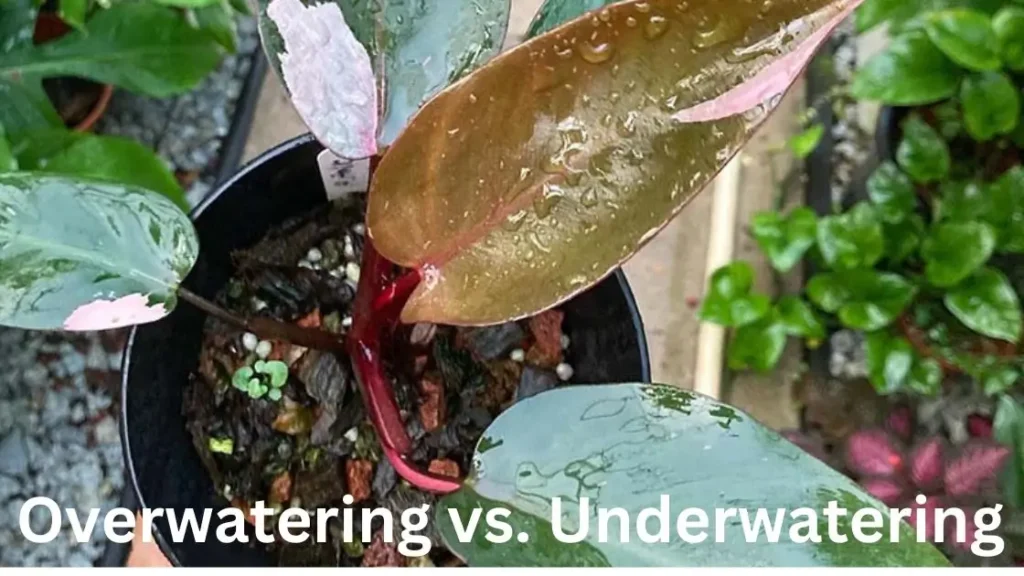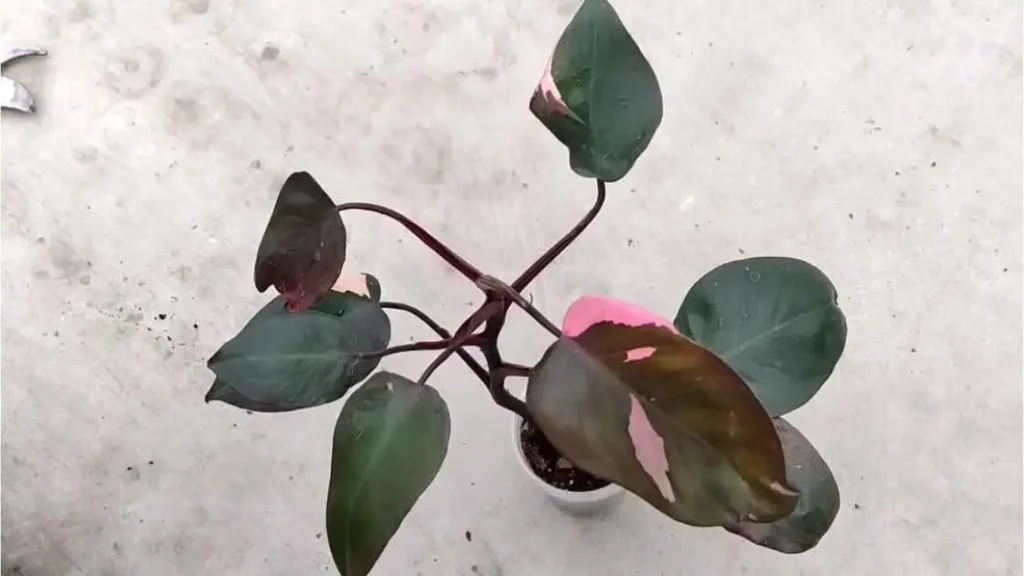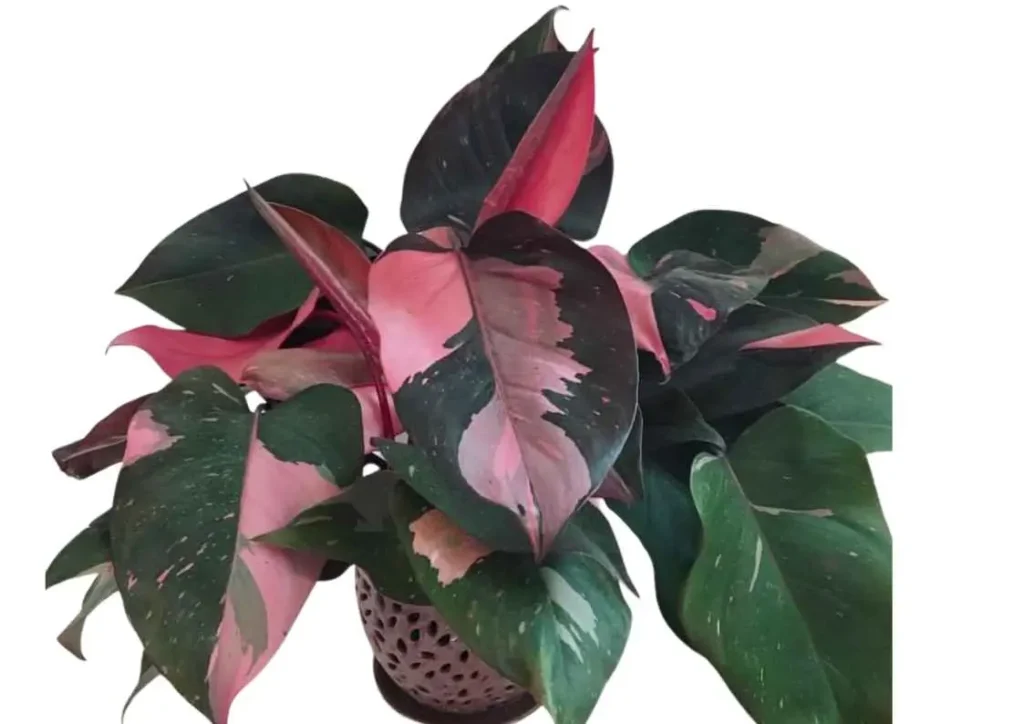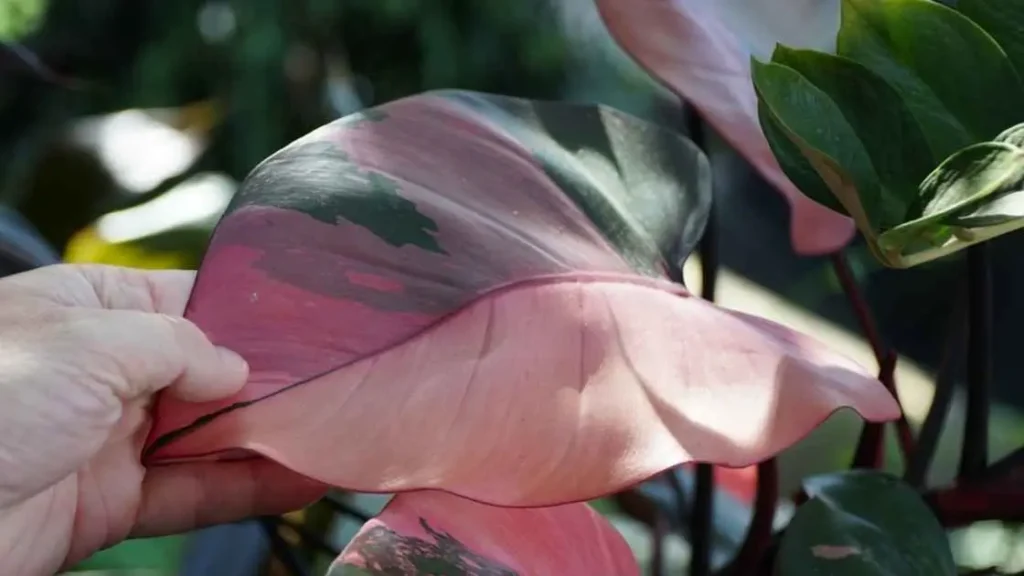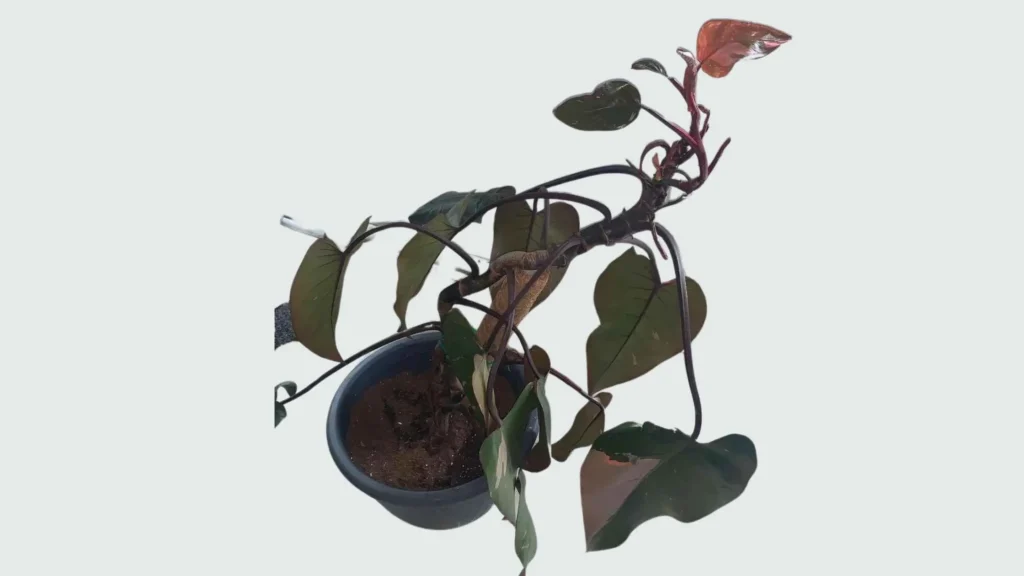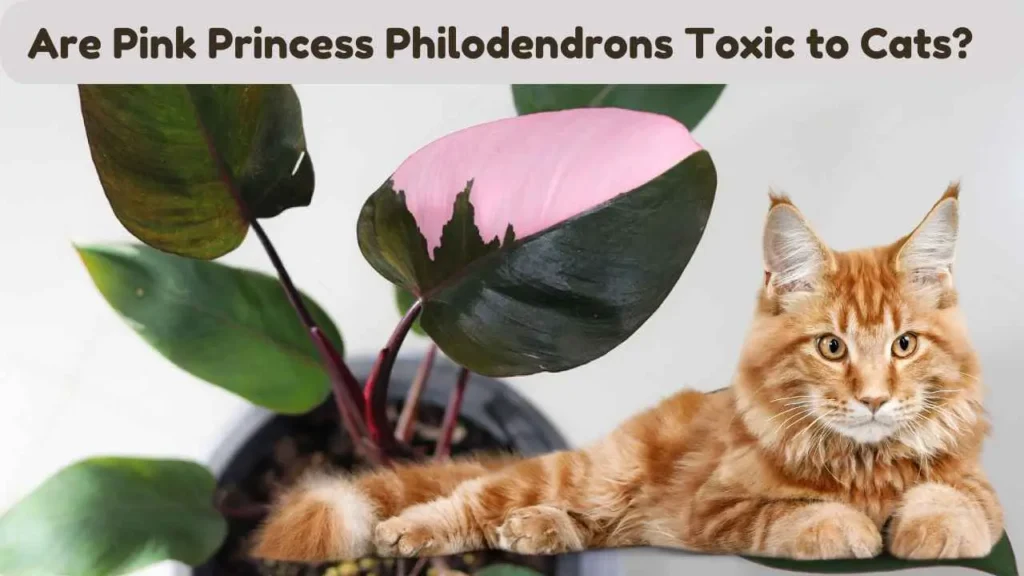Table of Contents
ToggleI remember the first time I saw a Pink Princess Philodendron. I fell in love right away. The dark green and pink leaves are hard to miss. If you’re like me, you probably spent time and money to get one for your plant collection. Now that it’s part of your home, keeping it healthy is your top goal.
One thing I’ve learned is that fertilizing is important. It helps your Pink Princess grow and keep its colors bright. But you can’t just use any plant food. You need to know when and what kind of fertilizer to use.
In this guide, I’ll show you how to feed your Pink Princess Philodendron. By the end, you’ll feel sure about caring for your plant. It will keep growing strong and showing off those pink leaves you love so much.
What Makes Pink Princess Philodendron Special?
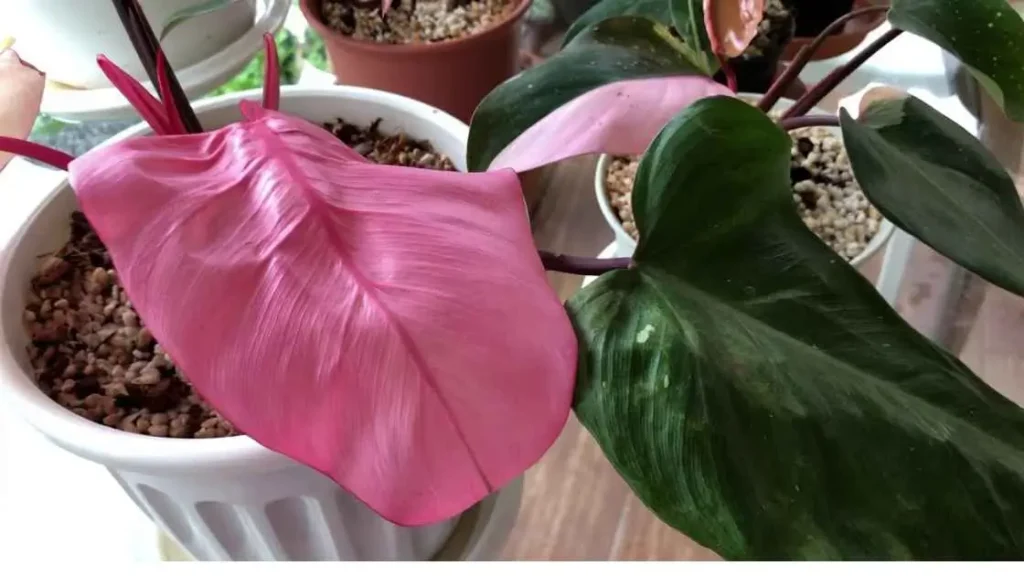
Why is the Pink Princess Philodendron Popular Among Plant Lovers?
Let’s be honest – there are many houseplants, but few stand out like the Pink Princess Philodendron. You might wonder why this plant is so special. The answer is in its colors. The dark green leaves mixed with pink make it feel like you have living art in your home. If you’re lucky, some leaves may turn mostly pink, creating a stunning look.
As a plant lover, I’ve seen that the Pink Princess does more than just look pretty. It also gives you a sense of pride. Getting those pink spots to show isn’t easy. It needs the right light, water, and yes – fertilizer.
What Challenges Do Pink Princess Philodendron Owners Face?
The Pink Princess Philodendron isn’t a plant you can ignore. It needs care. One of the hardest things is keeping its colors bright. Too much sun can burn the leaves. Too little sun, and the pink fades. Watering can also be tricky. Too much or too little water can cause problems.
Fertilizing is another important part. Many plant parents get confused here. If you don’t fertilize enough, the plant won’t grow well. Its colors won’t be as bright. But if you over-fertilize, the plant can get sick or stop growing.
Why is Fertilizing Important for Your Pink Princess Philodendron?
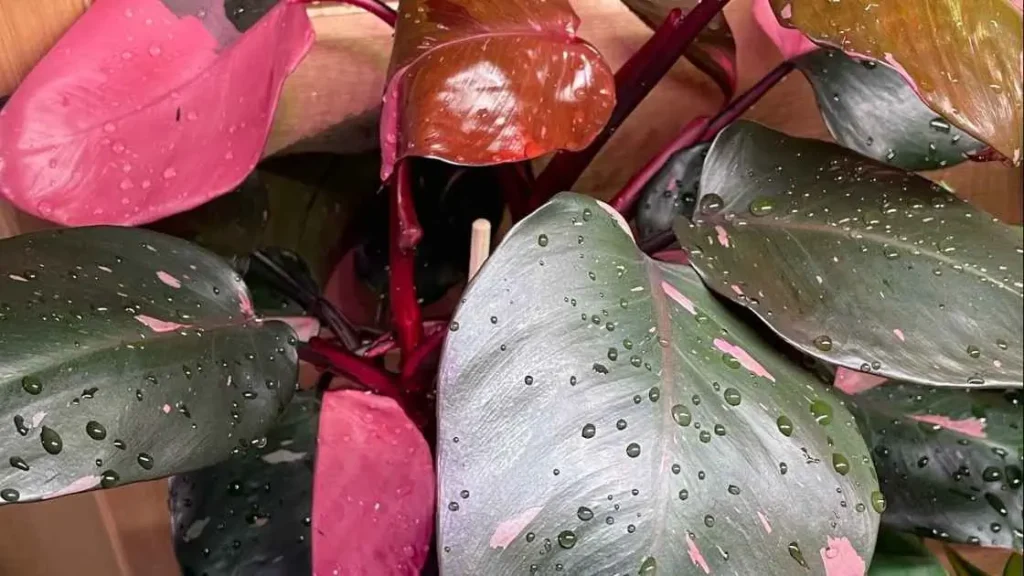
What Role Does Fertilizer Play in Plant Health?
Let’s talk about why your plant needs fertilizer. It may seem like extra work, but it’s important. Just like we need food to stay healthy, plants need nutrients to grow strong and look good.
Your Pink Princess takes nutrients from the soil. Over time, the soil runs out of these nutrients. That’s where fertilizer helps. It gives the soil back what your plant needs to keep growing. Without it, your plant may grow slowly, lose color, and not look as happy.
How Does Fertilizer Impact the Variegation of the Pink Princess?
Here’s something interesting. The pink color in your plant isn’t just by chance. It shows that your plant is healthy and getting what it needs. If your Pink Princess doesn’t get enough nutrients, you may see more green than pink. That’s because the green parts help the plant make food. When nutrients are low, the plant grows more green to survive.
Using the right fertilizer helps balance the growth and keep the pink color. But be careful. Too much fertilizer can burn the leaves and cause brown spots.
When Should You Fertilize Your Pink Princess Philodendron?
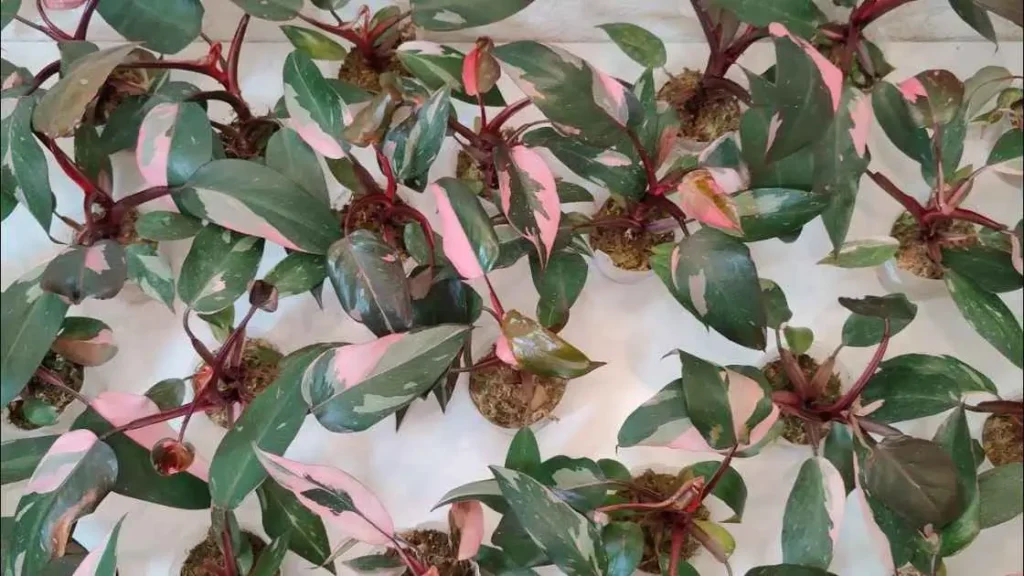
What is the Ideal Time of Year to Fertilize?
One of the first things I wondered about was, “How often should I fertilize my Pink Princess?” The truth is, timing matters a lot. The best time to fertilize is during its growing season, which is spring and summer.
During these months, your plant is making new leaves and needs extra nutrients to help it grow. Think of it like this – your Pink Princess is like an athlete during this time, so it needs more food (nutrients) to stay strong.
In fall and winter, your plant slows down. It doesn’t grow as fast, so fertilizing then can actually hurt it. When the weather cools, ease up on the fertilizer and let your Pink Princess rest.
How Often Should You Apply Fertilizer to Your Pink Princess?
Now that we know when to fertilize, let’s talk about how often. I like to fertilize my Pink Princess once a month during the growing season. Some people do it every two weeks, but once a month works well for most plants.
If you use liquid fertilizer, make sure to mix it with water the way the package says. It’s better to give too little fertilizer than too much. Too much can hurt the plant and cause nutrient burn.
Can You Over-Fertilize a Pink Princess Philodendron?
This is a common mistake new plant parents make. Trust me, I’ve done it too. Over-fertilizing can really hurt your plant. If you see yellow leaves, brown tips, or a crust on the soil, your plant might have fertilizer burn.
The good news is you can fix it! First, flush the soil with water to remove extra fertilizer. Then, stop fertilizing for a while and let your plant recover.
What Types of Fertilizers are Best for Pink Princess Philodendron?
Is Organic or Synthetic Fertilizer Better for Your Pink Princess?
Here’s where the choice gets tricky – organic vs. synthetic fertilizers. I like organic fertilizers because they come from nature. They are gentle on the plant and give food slowly. This keeps a steady supply of nutrients for your Pink Princess.
Synthetic fertilizers, on the other hand, give nutrients fast. If you want your plant to grow quickly, this might be the better choice. Just be careful with how much you use. Synthetic fertilizers are stronger and can cause problems if you use too much.
This version maintains the original meaning while simplifying the language, shortening sentences, and reducing complex words.
What NPK Ratio Should You Look for in a Fertilizer?
When you buy fertilizer, you may see “NPK” on the label. This means nitrogen (N), phosphorus (P), and potassium (K). These are the main nutrients plants need. For your Pink Princess Philodendron, use a balanced fertilizer. Look for one with an NPK ratio like 10-10-10 or 20-20-20.
Nitrogen helps the leaves grow, phosphorus helps the roots grow, and potassium keeps the plant healthy. Because the Pink Princess has lots of leaves, nitrogen is very important to keep them bright and full.
Which Ingredients in Fertilizers Support Leaf Variegation?
To keep the pink color in your Pink Princess, use a fertilizer that helps the leaves grow well. Look for one that has magnesium, iron, and calcium. These nutrients make the leaves strong and healthy. They also help the plant make bright pink patches.
How Do You Choose the Right Fertilizer for Your Pink Princess?
What Factors Should You Consider Before Buying Fertilizer?
Choosing the right fertilizer can be tricky. There are many choices, but I keep it simple. When I shop for fertilizer, I think about a few things:
- Plant Needs: The Pink Princess is a plant with special leaves. I choose a fertilizer that helps the leaves grow and keeps their color bright.
- Organic or Synthetic: I like to use organic fertilizer because it’s natural. But if you want faster results, you can use synthetic fertilizer.
- NPK Ratio: Make sure the NPK ratio is balanced. This helps the plant get all the nutrients it needs.
How Should You Apply Fertilizer to Your Pink Princess Philodendron?
What’s the Proper Way to Dilute Fertilizer for Philodendrons?
So, you’ve picked the right fertilizer. Now it’s time to use it. This part can be tricky: mixing the fertilizer. It’s important to do it right to avoid hurting your plant.
Most liquid fertilizers are strong and need water added. For a plant like the Pink Princess, it’s better to be careful. Always follow the directions on the bottle. If you’re not sure, start by using half of the amount they suggest.
I like to use half-strength fertilizer, especially at the start. You can add more later if your plant needs it. It’s safer to start slow than to give too much. Too much fertilizer can hurt the roots, and fixing that is hard.
What Techniques Ensure Even Distribution of Fertilizer?
Once your fertilizer is mixed, how you apply it matters as much as how much you use. Pouring it all in one spot can cause some soil to get too much while other areas get none. The goal is to spread the fertilizer evenly so all the roots get fed.
Here’s what I do: first, I water the plant a little to help the fertilizer spread. Then, I slowly pour the fertilizer around the plant’s base. Be sure to cover all the soil, not just one part. After that, I give the plant a little more water to help the fertilizer soak in.
Are There Any Special Instructions for Newly Potted Pink Princesses?
If you just repotted your Pink Princess Philodendron, you may wonder when to start fertilizing again. The answer is simple: wait a little while.
Repotting can stress your plant, and adding fertilizer right after can make it worse. It’s best to wait about 4 to 6 weeks before you add fertilizer again. This gives the plant time to adjust and grow its roots.
New soil often has enough nutrients, so the plant won’t need extra fertilizer right away. Once you see new leaves growing, it’s a good time to start fertilizing again.
What Are the Signs Your Pink Princess Philodendron Needs Fertilizer?
What Are Common Symptoms of Nutrient Deficiency?
Let’s talk about how to tell if your Pink Princess needs nutrients. One clear sign is slow growth. If your plant isn’t making new leaves as often, it may need food.
Another sign is yellow leaves. If older leaves turn yellow and fall off, your plant might need more nitrogen. Also, if your plant is growing more green leaves than pink, it could mean it’s missing phosphorus or other nutrients for healthy colors.
How Can You Tell if Your Pink Princess is Malnourished?
In addition to yellow leaves and slow growth, there are other things to watch for. If your Pink Princess Philodendron has weak or thin growth, with long stems and fewer leaves, it may not be getting enough nutrients (or light).
Also, check the size of the leaves. If they seem smaller than usual or the plant is struggling to grow new ones, it could be time to feed it. But remember, fertilizer is just one part. You should also think about how much water and light your plant is getting.
Can You Fertilize Pink Princess Philodendron Too Much?
What Are the Risks of Over-Fertilization?
I’ve been there—using too much fertilizer, thinking it will help the plant grow faster. But that’s not how it works. Too much fertilizer can actually hurt your Pink Princess Philodendron.
The most common sign of too much fertilizer is fertilizer burn. This shows up as brown or crispy leaf tips. It happens because salts build up in the soil and hurt the roots. Another sign is when the plant wilts, even though the soil is moist. This happens because too many nutrients stop the plant from soaking up water properly.
What Signs Show You’ve Over-Fertilized and How Do You Fix It?
If you think you’ve used too much fertilizer, don’t worry! You can fix it. First, flush the soil. This means giving the plant a deep watering to wash out the extra salts and nutrients. Water it until the water drains out the bottom, then let the plant dry before watering again.
After flushing the soil, stop fertilizing for a while so the plant can recover. If the soil feels hard or has a white crust on top (a sign of salt buildup), you might want to repot your Pink Princess in fresh soil.
How Does Watering Influence Fertilizer Effectiveness?
Should You Water Before or After Fertilizing?
Watering and feeding your plant go together. The timing is important. First, water your plant a little before feeding. This stops the roots from getting hurt by the food. Wet soil helps the food spread evenly. After feeding, give the plant more water. This helps the food reach the roots.
How Does Humidity Affect Fertilizer Absorption in Pink Princess Philodendron?
Humidity is more important for plant growth than most people think. The Pink Princess Philodendron is a tropical plant. It likes humid places. When the air is moist, the plant’s pores open. This helps it take in nutrients better.
If you live in a dry area or your home is dry, try using a humidifier. You can also mist the leaves often. More humidity can help the plant take in nutrients and stop it from drying out too fast.
Are There Fertilizer Alternatives for Pink Princess Philodendron?
What Natural Fertilizers or DIY Options Are Effective for Pink Princesses?
If you like to keep things natural, there are some great organic fertilizers you can try. One of my favorites is compost tea. It’s easy to make and full of nutrients for your Pink Princess.
Another option is worm castings, which are worm poop. It may sound gross, but worm castings have nutrients and good microbes that help your plant grow. Just mix a little into the top layer of soil.
You can also use banana peels for potassium or eggshells for calcium. Make sure to clean and dry them before adding to the soil to keep pests away.
Can You Use Compost or Organic Mulch as Fertilizer?
Yes! Compost is one of the best things for your Pink Princess. It gives nutrients to the soil and helps it hold water. I like to mix a bit of compost into the soil every few months to keep my plants healthy.
Organic mulch is also a great idea. It helps keep the soil moist, so you don’t have to water as much. Mulch also breaks down slowly and gives nutrients to the soil. Just don’t pile it close to the plant’s base because that can cause moisture problems or rot.
How Does Lighting Impact the Need for Fertilization?
How Does Low Light Versus Bright Indirect Light Influence Fertilizer Needs?
Light and fertilizer work together. Your Pink Princess Philodendron needs different amounts of fertilizer based on how much light it gets. In bright, indirect light, your plant will grow faster and need more nutrients.
In low light, your plant will grow slowly and need less fertilizer. Too much fertilizer in low light can cause nutrient buildup in the soil. This can hurt the roots and lead to other problems.
What Should You Adjust in Fertilizing for Indoor Versus Outdoor Pink Princesses?
If your Pink Princess is outside, it gets more light and grows faster than one indoors. You may need to fertilize it more often. But watch how your plant reacts—too much fertilizer can still cause problems, even with fast growth.
How Do Environmental Factors Affect Fertilizer Performance?
How Do Temperature and Humidity Impact Fertilizer Absorption?
When you fertilize your Pink Princess, don’t forget about temperature and humidity. These can affect how well your plant takes in nutrients.
If your plant is in a warm and humid place, it grows faster. This means you’ll need to fertilize more often. But if the temperature drops or the air is dry, the plant will grow slower, and it won’t need as much fertilizer.
I’ve noticed that if the air is too dry, the plant can’t take in nutrients well, even with regular fertilizing. In this case, raising the humidity can help. You can use a humidifier or pebble tray to do this.
What Changes Should You Make in Different Seasons?
Like many tropical plants, the Pink Princess Philodendron grows faster in warm months and slower in cold ones. In spring and summer, your plant will grow more, so fertilizing once a month is a good idea.
In fall and winter, you should use less fertilizer. The plant grows slower during these months, and too much fertilizer can cause salt buildup and harm the roots. I usually stop fertilizing in winter and only start again when I see new growth in spring.
What Happens if You Don’t Fertilize a Pink Princess Philodendron?
Will a Pink Princess Survive Without Fertilization?
You might be wondering, what happens if you don’t use fertilizer? Can your Pink Princess Philodendron live without it? The short answer is yes. Your plant won’t die if you skip fertilizing. But it also won’t grow as well.
Without regular fertilizer, the soil loses its nutrients. Over time, your plant will grow slower, and it may not make many new leaves. The pink color might fade, and you’ll see more green. So, while your Pink Princess can live without fertilizer, it won’t be as healthy or colorful as it could be with proper care.
What Long-Term Effects Can Neglecting Fertilizer Have?
In the long run, not using fertilizer can cause problems for your Pink Princess. Your plant may stop growing, its leaves might turn yellow, and its stems could get weak. It might also become more likely to get pests and diseases because it won’t have the nutrients to stay strong.
Fertilizing isn’t just an extra step; it’s important for keeping plants healthy. Skipping it once in a while is fine, but if you never do it, your plant’s health will suffer.
How to Combine Fertilizer Use with Other Plant Care Practices?
How Should Fertilization Fit Into Your Overall Care Routine?
Taking care of your Pink Princess Philodendron is more than just fertilizing. It’s part of a routine that also includes watering, light, and repotting. I’ve found that it helps to make fertilizing a regular habit, just like watering.
For example, I fertilize my plant once a month, right after I water it, during the growing season. I also watch my plant closely. If it starts growing too fast or the leaves burn, I use less fertilizer. But if it grows slowly or the leaves lose color, I add a bit more.
Remember, fertilizer isn’t a fix for all problems. If your plant isn’t doing well, don’t think more fertilizer will help. Make sure it’s getting enough light and water, and check for bugs or sickness before changing your fertilizer routine.
What Other Growth-Boosting Strategies Should You Use Alongside Fertilizer?
Besides fertilizer, there are other ways to help your Pink Princess Philodendron grow strong. First, make sure it gets bright but indirect light. This plant can live in low light, but it won’t grow as fast, and the leaves may not be as pink.
Be careful with how you water it. The Pink Princess likes to dry out a little between watering. Too much water can cause root rot, which slows growth and causes problems.
Also, try dusting the leaves often. Clean leaves take in more light, which helps the plant make food and grow better.
Conclusion
Fertilizing your Pink Princess Philodendron doesn’t have to be hard. But it does need some care. By following a simple schedule, using the right fertilizer, and making small changes for your plant’s environment, you can keep it healthy. This will help your Pink Princess stay bright and show off that lovely pink color.
Remember, fertilizing is only part of the care. You also need to watch the plant’s light, water, and humidity. If you keep up with all its needs, your Pink Princess will grow well. Soon, your friends will envy your beautiful plant.
Happy growing!
How often should I fertilize my Pink Princess Philodendron?
You should fertilize your Pink Princess once a month during the growing season (spring and summer) for optimal growth and color.
What is the best type of fertilizer for a Pink Princess Philodendron?
A balanced fertilizer with an NPK ratio of 10-10-10 or 20-20-20 works best, along with micronutrients like magnesium and iron to support variegation.
Can I use organic fertilizer for my Pink Princess Philodendron?
Yes, organic fertilizers like compost or worm castings are great options as they release nutrients slowly, promoting steady growth.
What are the signs of over-fertilizing a Pink Princess Philodendron?
Over-fertilizing can cause yellow leaves, brown leaf tips, or a white crust on the soil, indicating fertilizer burn.
Should I fertilize my Pink Princess Philodendron in winter?
No, it’s best to avoid fertilizing in fall and winter, as the plant enters a dormant phase and does not require as many nutrients.
How does fertilizer impact the pink color of my Pink Princess Philodendron?
Proper fertilization promotes balanced growth, helping the plant maintain its bright pink variegation. Lack of nutrients can result in more green leaves.
Related
Discover more from Pink Philodendron
Subscribe to get the latest posts sent to your email.

